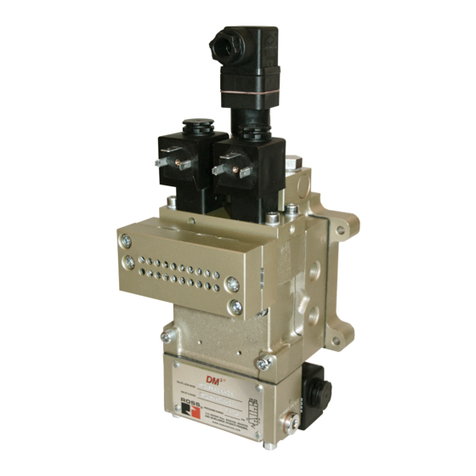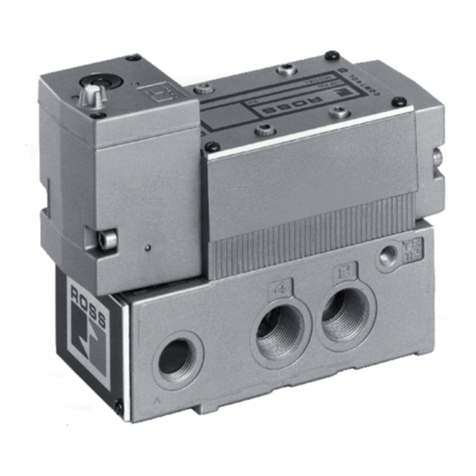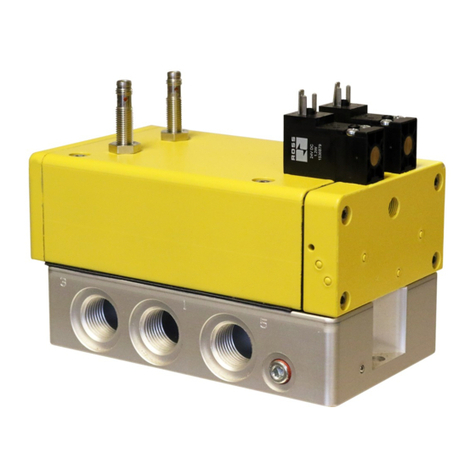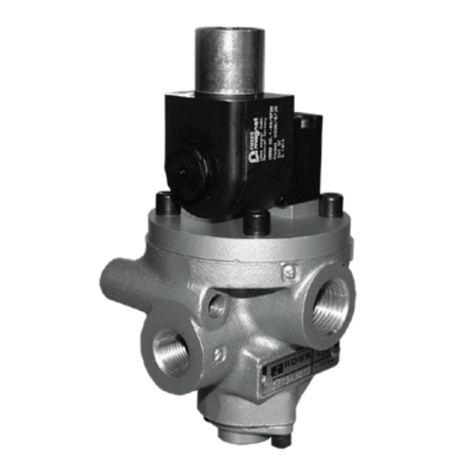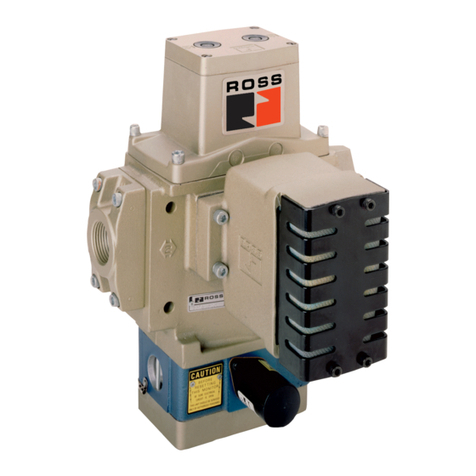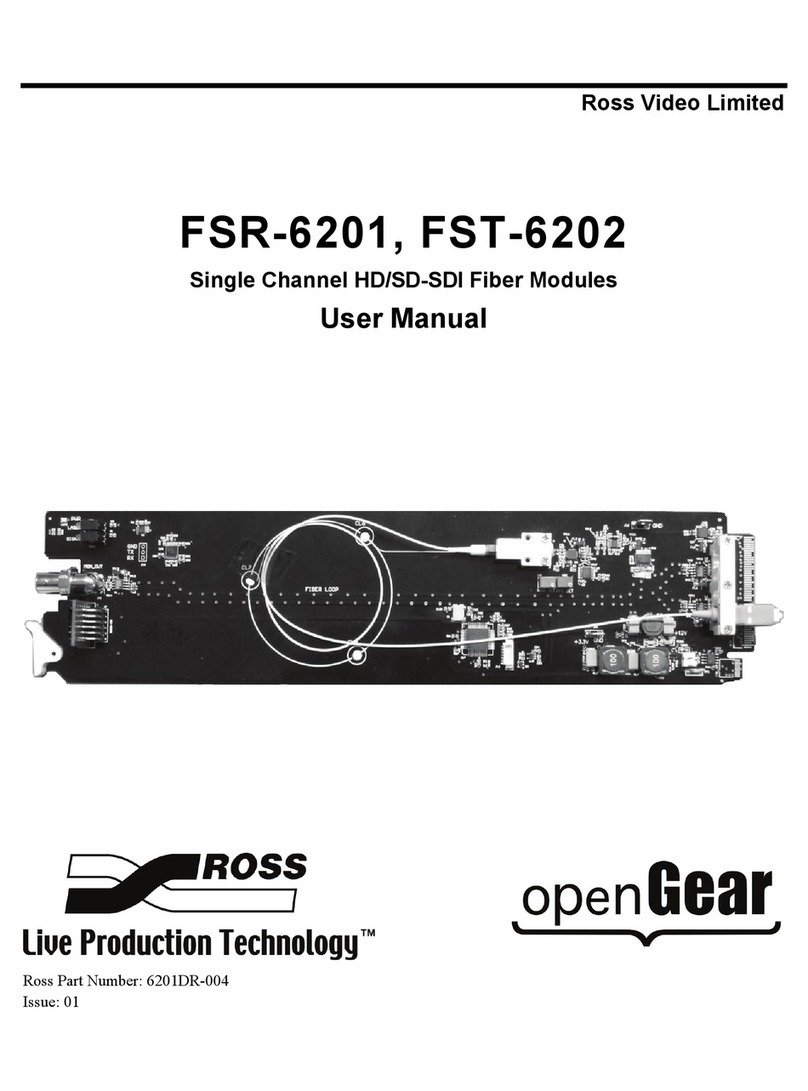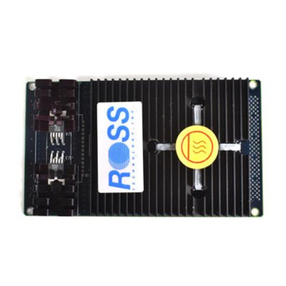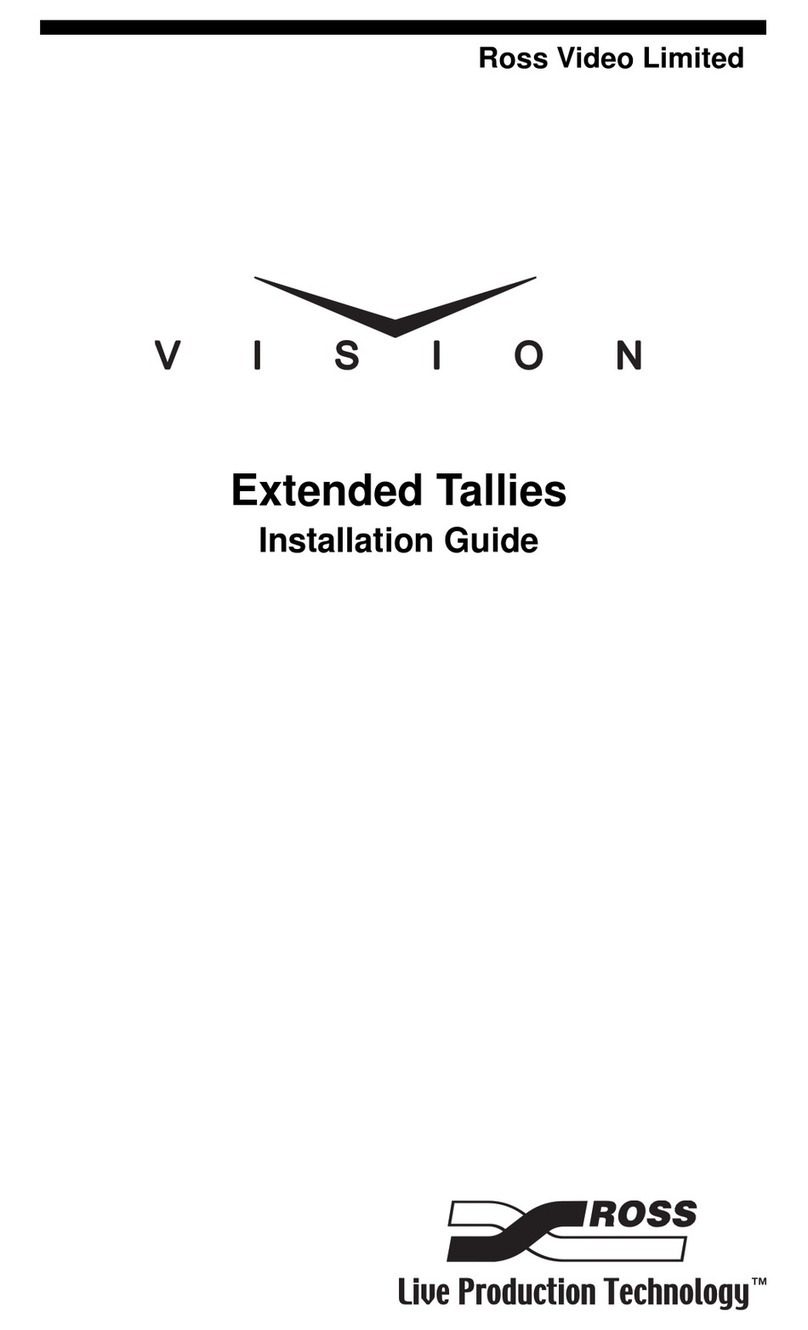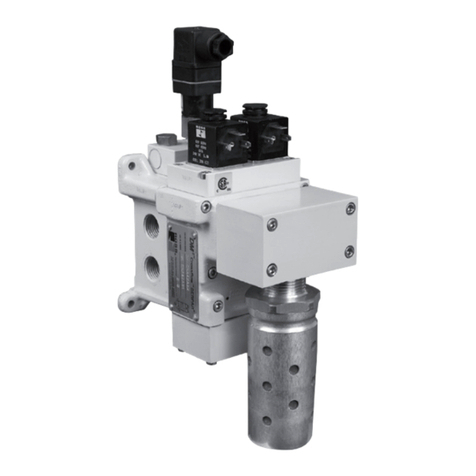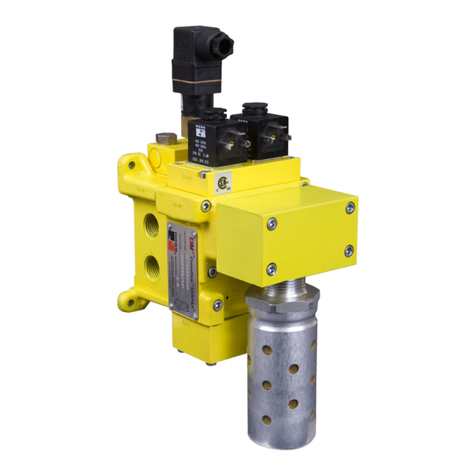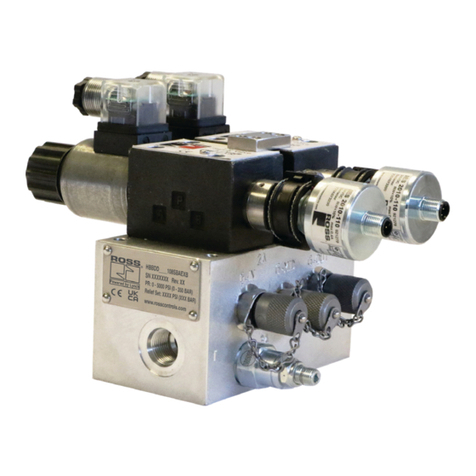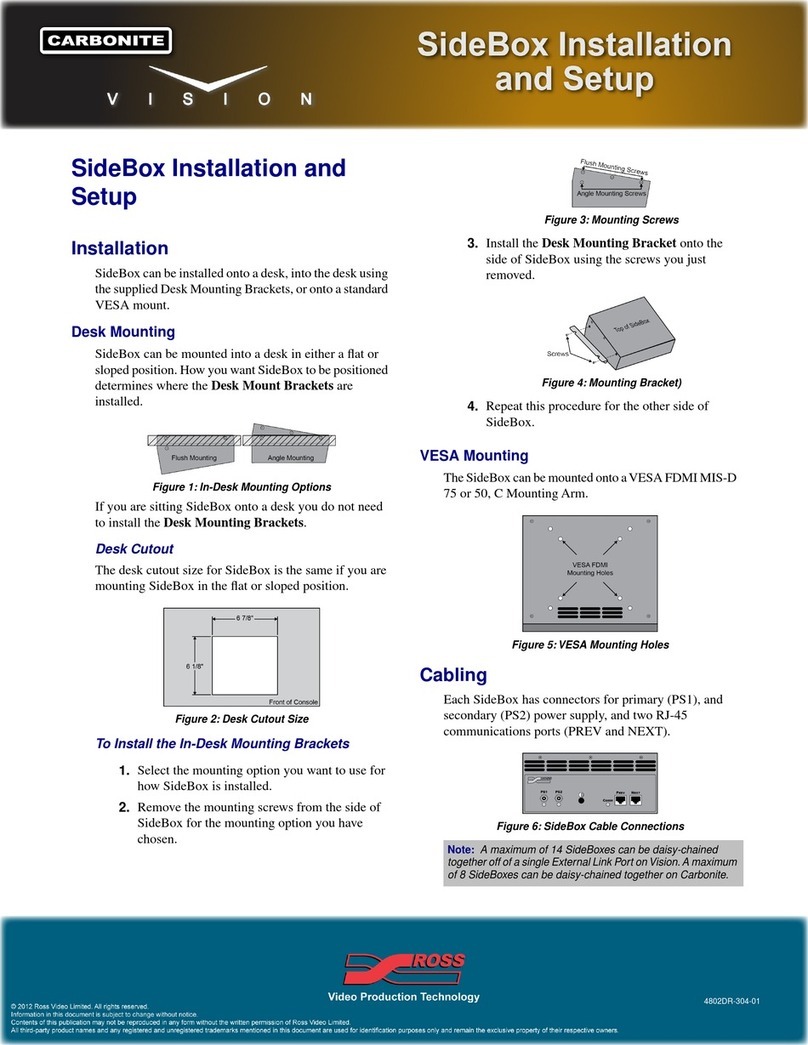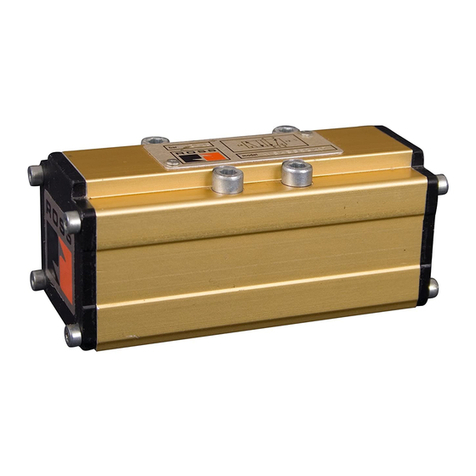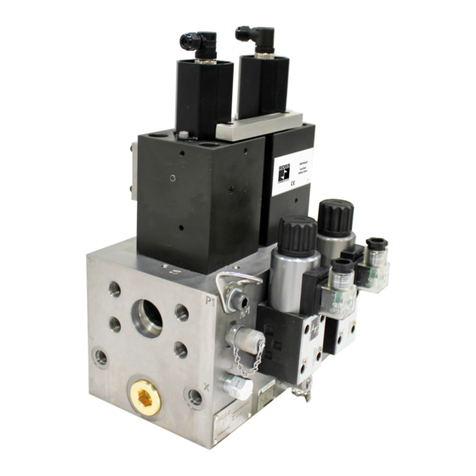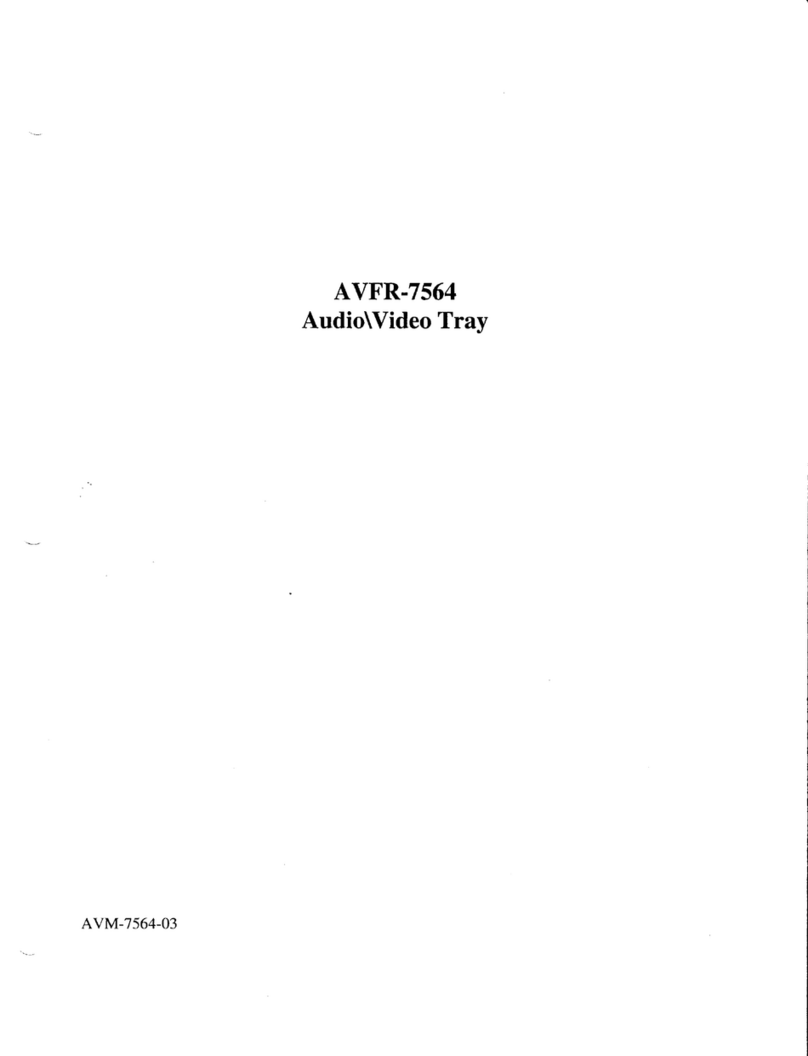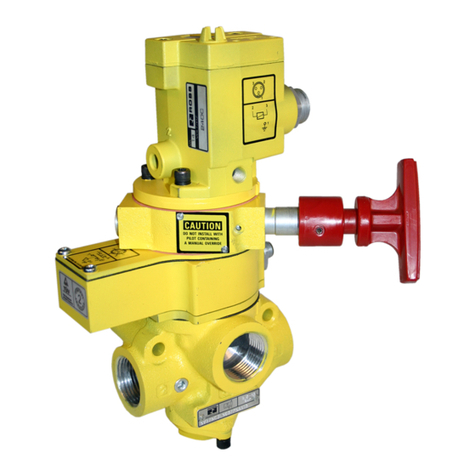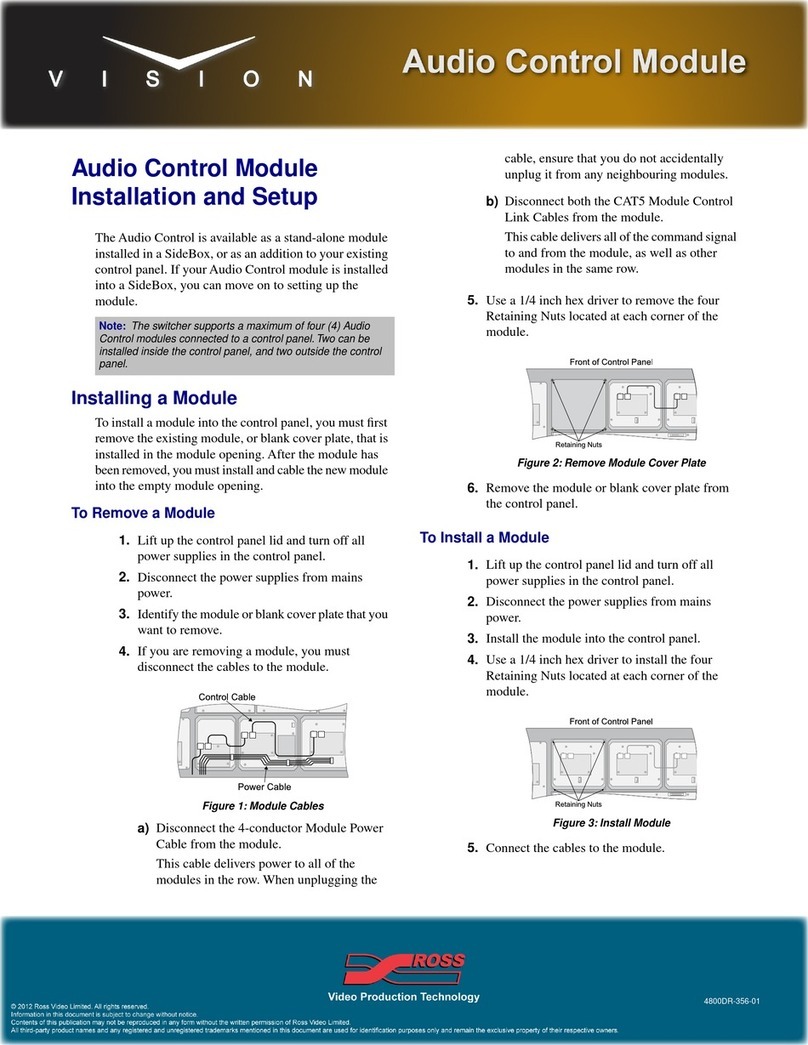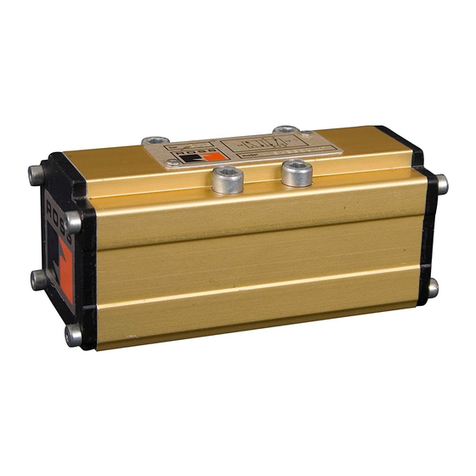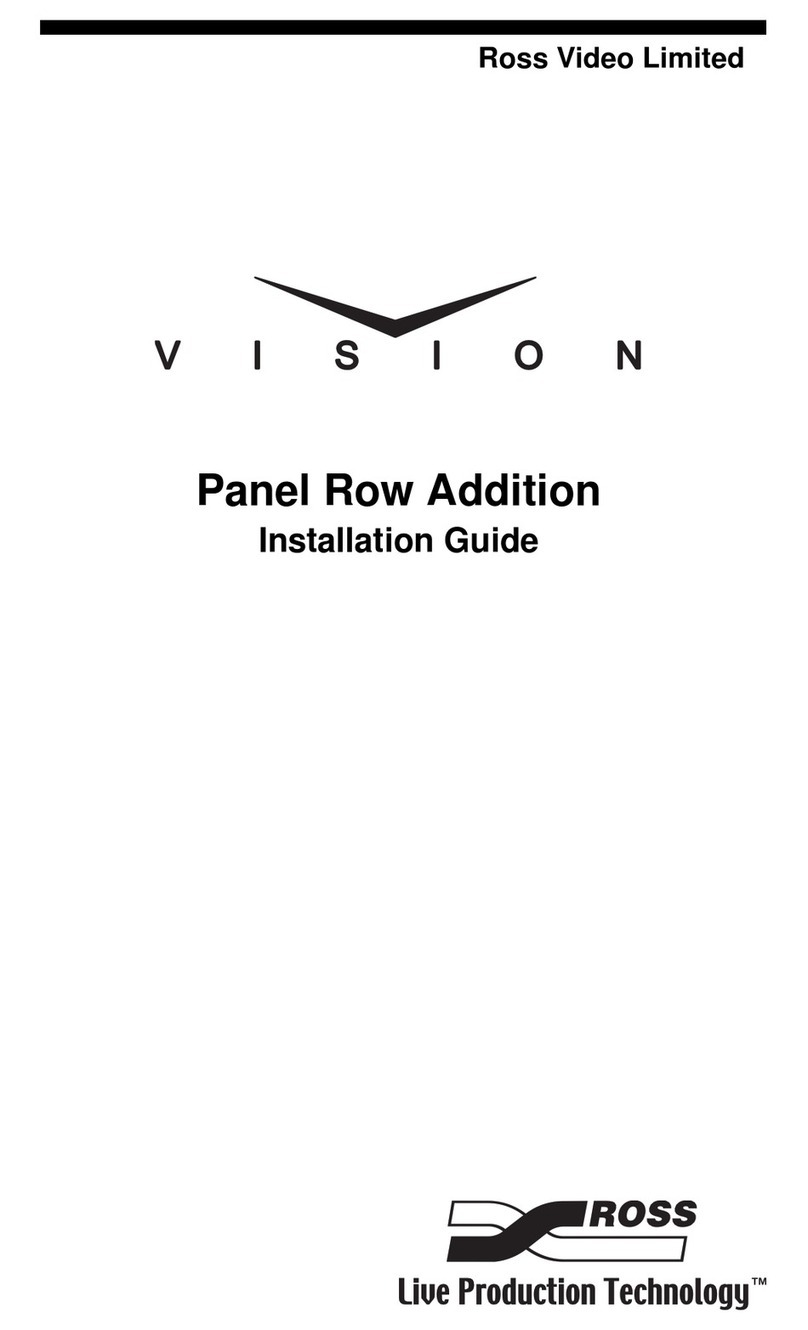
8© 2023, ROSS®, All Rights Reserved.
77 Series Operating Instructions
www.rosscontrols.com
Package Contents
Items included: • 77 Series valve
• Operating instructions
1. About this Documentation
These instructions contain important information for the safe and appropriate
assembly and commissioning of the product.
fRead these instructions all the way through, particularly section 2. “Notes on
Safety”, before working with the product.
fMake these operating instructions available to the engineer and assembly
technician of the machine/system in which the product will be used.
fKeep these operating instructions for the entire product life cycle.
Additional documentation:
• SISTEMA libraries
• DGUVcerticate:GermanSocialAccidentInsurance
• Product catalog and other technical documents
For more information visit www.rosscontrols.com.
fIn addition, observe all applicable local and national regulations on accident
prevention and on environmental protection.
1.1. Warning Notices in these Operating Instructions
In these operating instructions, warning notices precede sections with handling
requirements which incur risks of personal injury or material damage.
Warnings are structured as follows:
SIGNAL WORD
Type or source of hazard!
Consequences
fMeasures to avert danger
• Warning triangle: Indicates a risk of fatal or severe injuries.
• Signal word: Indicates the severity of the danger.
• Type or source of hazard: States the type of danger or the source of the hazard.
• Consequences: Describes possible consequences of ignoring the warning.
• Measures to avert danger: Indicates how to avoid the danger. It is essential that the
measures to avert danger are complied with.
DANGER
Indicates an imminent and serious danger that will result in
severe or even fatal injury if you fail to avoid it.
WARNING
Indicates a possible danger that could result in severe or even
fatal injury if you fail to avoid it.
CAUTION
Indicates a danger that may result in minor to moderate injuries if
you fail to avoid it.
ATTENTION
Indicates potential property damage that may be incurred by the
product or its surroundings if you fail to avoid it.
2. Notes on Safety
The product has been manufactured according to the accepted rules of current
technology.
There is risk of injury or damage if the following safety instructions and warnings given
in this instruction manual are not observed.
2.1. Intended Use
The 77 Series of double valves are safety components designed and manufactured in
accordance with Machinery Directive 2006/42/EC and bear the CE and UKCA mark.
The 77 Series line of double valves are redundant 5/2 valves that are designed to
meet the needs and requirements of Safe Return.
Cylinder/Actuator (5/2 valves) applications for machinery with pneumatic controls.
Typically, these valves are implemented to meet the Category 4 and/or Performance
Level e requirements of a machine’s (or system’s) safety circuit as determined by a
risk assessment of the hazards and tasks required of employees that interact with the
machine/system.
fSee section 3“Technical Data” for the standards and test values complied with and
adhered to by the product. See the declaration of conformity for product-relevant
directives. The 5/2 77 Series valves are designed to control the direction of air
ow into and out of a double-acting cylinder or other pneumatic actuator in
order to drive the cylinder forward or backward to suit the requirements of the
machine operation. However, the 77 Series valve does this with the same level of
control expected of the machine’s system’s safety circuit. The safety function of
the 77 Series valve is to return the cylinder/actuator to its home “safe” position
whenever a fault occurs within the valve.
NOTE: Maintenance tasks require following full lock-out/tag-out procedures to
relieve hazardous energy and prevent unexpected startup.
2.1.1. Safety Function According to ISO 13849
77 Series valves are designed in accordance with the requirements listed in ISO
13849-1 and -2. Their “fail-to-safe” safety function is ensured even in case of a fault
within the valve (e.g., caused by wear, contamination, or similar situations).
The safety function of the 5/2 77 Series valve is to drive a double-acting cylinder
or other pneumatic actuator forward when the two valve elements are actuated
simultaneously, but to drive the cylinder or other actuator back to its home “safe”
position when both valve elements are shut off or if only one of the two valves is
actuated. A fault in the system where only one valve actuates when switching on or
only one de-actuates when shutting off causes the 77 Series valve to supply air to
port 2 of the valve and to simultaneously open port 4 to exhaust (port 5). This, in turn,
causes the cylinder or other actuator to return to its home “safe” position.
In the event of loss of air pressure at the inlet port a check valve (may be removed on
customerrequest)isinstalledtotrapthedownstreamair,asmallbleedoriceslowly
relieves the trapped air
Attention: There may be some movement because of gravity or pressure balance,
whiletheairwillbeventedviathebleedorice
All 77 valves are equipped with a dynamic “CrossMirror” monitoring function (self-
contained).
The 77 Series valves are self-testing, redundant systems in accordance with the
requirements listed in ISO 13849-1 and -2.
The control outputs of the safety system must be designed and constructed to meet the
Category and/or Performance Level requirements of the safety system, as determined
by the risk assessment of the machine. Normally, the outputs to the solenoids are
dual-channel outputs from a safety relay or safety PLC.
2.1.2. Common Cause Failure – CCF
The product has been engineered and manufactured according to the fundamental
and proven safety principles of ISO 13849-1 and -2.
Critical failure modes and causes:
• Failure of the safety function - caused by simultaneous incomplete return of both
solenoid valves (A and B).
• Common Cause Failures (CCF) are failures of different components, resulting
from a single event. CCF are not to be confused with cascading faults or common
mode faults. Common cause failures can cause loss of the safety function,
especially in dual channel circuits where both channels could fail simultaneously
due to a single event.
• Maintaincompressedairquality,i.e.,ltration,pressureregulation,.
• Avoid oils that can cause valve seals to swell, soften, or otherwise deteriorate.
• Operating outside of prescribed temperature limits.
• Install the valve such that the normal stroke travel of the valve elements are
perpendicular to the main direction of machine vibration and/or mechanical shock.
• DonotuseatestpulselongerthanallowedbytheTechnicalSpecications.
• Avoidexternalmagneticelds.
• Do not plug the valve exhaust port.
• Useonlyhigh-ow,non-cloggingsilencers,withsimilar orhigherspecications
as ROSS®silencers.
2.1.3. Diagnostic Coverage
A diagnostic coverage of 99% is achievable through appropriate integration of the 77
Series valve into the safety control system.
WARNING: In the event of loss of pressure during a fault could cause unexpected
movement of a cylinder that is being controlled by the valve.
2.1.4. Foreseeable Misuse
WARNING
Risk of Injury!
Misuse may result in injury or damage.
fThe product must be used exclusively as intended.
The product must be used exclusively as intended.
ENGLISH
